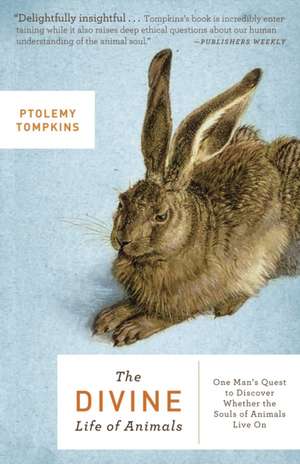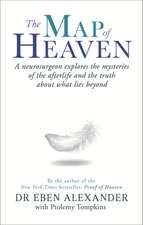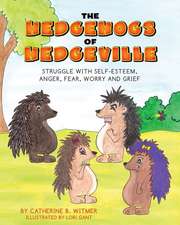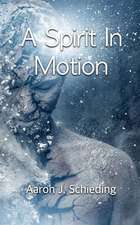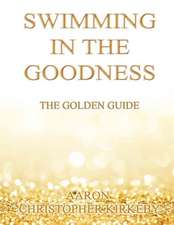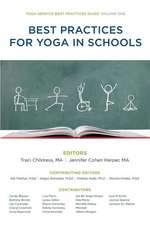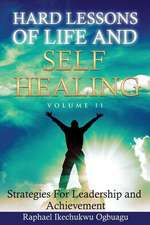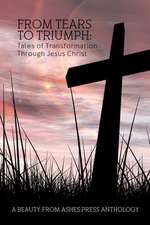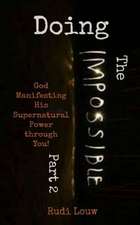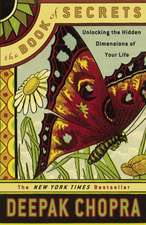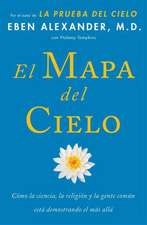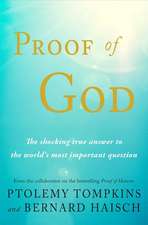The Divine Life of Animals: One Man's Quest to Discover Whether the Souls of Animals Live on
Autor Ptolemy Tompkinsen Limba Engleză Paperback – 31 mai 2011
Anyone who has ever mourned the loss of a cherished pet has wondered about the animal soul. Do animals survive the death of the body, or are they doomed to disappear completely when they leave this world behind? Both scientists and religious authorities have long scoffed at the idea of animals in heaven. Yet the question endures. In this wise, immensely readable book, Ptolemy Tompkins embarks on a quest for the answer—taking us on a top-speed tour of the history of the animal soul.
Equally at home with mainstream and alternative spiritual philosophies, Tompkins takes us from the savannas of Africa to the earth’s first cities to the early days of the great faith traditions of both East and West. Along the way, he shows that, despite what many of us have been taught, the world’s various spiritual traditions all have profoundly meaningful things to say about the animal soul, if we simply know where to look. Rescuing these ancient insights and blending them with vivid stories about animals today—from a dwarf rabbit named Angus to a manatee named Moose to a black bear named Little Bit—The Divine Life of Animals paints a gloriously inclusive picture of the cosmos as a place made up of both matter and spirit, in which animals are every bit as important, spiritually speaking, as the humans with whom they share the world. Though it is startlingly original, The Divine Life of Animals also feels strangely and instantly familiar, for it reveals truths that many of us have held in our hearts already, waiting only for someone to give fresh voice to one of the oldest and most trustworthy intuitions we possess.
The Divine Life of Animals offers a compelling and timeless vision of the relationship between humans and animals that will have you looking at the animals in your life with new eyes.
From the Hardcover edition.
Preț: 102.68 lei
Nou
Puncte Express: 154
Preț estimativ în valută:
19.65€ • 20.41$ • 16.32£
19.65€ • 20.41$ • 16.32£
Carte disponibilă
Livrare economică 13-27 ianuarie 25
Preluare comenzi: 021 569.72.76
Specificații
ISBN-13: 9780307451330
ISBN-10: 030745133X
Pagini: 243
Dimensiuni: 133 x 204 x 14 mm
Greutate: 0.19 kg
Editura: Three Rivers Press (CA)
ISBN-10: 030745133X
Pagini: 243
Dimensiuni: 133 x 204 x 14 mm
Greutate: 0.19 kg
Editura: Three Rivers Press (CA)
Notă biografică
PTOLEMY TOMPKINS is the author of four critically praised books, including Paradise Fever: Growing Up in the Shadow of the New Age and The Beaten Path: Field Notes on Getting Wise in a Wisdom-Crazy World. His writings have appeared in three editions of The Best Spiritual Writing, as well as in Harper's and the New York Times Magazine. He currently writes a monthly column, “The Winged Life,” for Beliefnet.com and is a regular contributor to Guideposts and Angels on Earth.
From the Hardcover edition.
From the Hardcover edition.
Extras
1
Mystery
A Little Man in a Bunny Suit
At the age of twenty-four, on a whim, I became the owner of a Netherlands dwarf bunny named Angus. Physically, Angus was about the size of a softball, but in terms of personality he soon established himself as considerably larger. My then-girlfriend Sarah and I moved around a lot in those days, but wherever we went, Angus went with us. Whether I was waiting tables in Massachusetts, working as an office temp in New York, or finishing the manuscript of my first book in a beach apartment in San Diego (ironically enough, on those same ancient Mesoamerican pyramid cultures that I'd found so boring at age twelve), Angus was always there, ready to cheer Sarah and me up with his quirky little repertoire of habits. When he was feeling feisty, Angus would charge back and forth and thump his back feet on the floor. In more- relaxed moments, he'd stretch himself out on his side like a cat- something neither Sarah nor I had ever known rabbits did. Sometimes, waking up from a nap on our futon, I'd find him perched-alertly as usual-on my head.
Up to that point, my experiences with small, warm-blooded pets had been confined to gerbils, mice, and guinea pigs. These animals were fine as far as they went, but there was, I had learned, only so much that could be expected from them personality-wise. When I first brought Angus home, I'd had no great expectations from him in this department, either. He was, I figured, simply about as much of a pet as Sarah and I, given how much we moved around and how little an idea we had of what we were doing with our lives, could handle.
But right from the start, Angus proved me wrong. Though most of what he did was indeed very predictable and clearly directed by instinct- that basic Rabbit 1.0 operating system that he, like every other member of his tribe, came into the world possessing-he went about these activities with a certain unmistakable individuality-one might even say a style.
You could see this individual spin Angus put on his rabbit behaviors in all kinds of places-from the curiously nonchalant way he had of holding a stalk of alfalfa with his front paws as he munched his way down it, to the ever so slight but unmistakable look of bemusement he would get on his face sometimes when he was just sitting around. Just a rabbit? No way. Angus was Angus.
Through a Human Lens
Not that these qualities appeared with such clarity to everyone else. "I can't believe the way you two anthropomorphize that animal," my best friend Greg-a chemist's son with a considerable knowledge of science-would say as he watched us fussing over our tiny surrogate child. "Do you know how big his brain is?" (Matters were not helped in this regard by Sarah's habit of calling Angus her "little man," as she would every morning when she let Angus out of his cage with a cheery "And how's my little man today?")
I knew Greg was right-at least technically. Sarah and I did load Angus down with a little more in the way of human qualities than he was capable of carrying. But that was what people had always done, right? All you had to do to see that was look in a medieval bestiary, with its wildly unrealistic drawings of animals, accompanied by long lists of their Christian virtues and vices, or open one of the books on mythology that I kept lined up on the floor next to our futon for consultation while writing my book on ancient Mesoamerica. An illustration in one of these books-a translation of the Popol Vuh, the sacred book of the Quiche Maya Indians of Guatemala-always made me think of Angus in particular. The illustration was from an ancient Mayan ceremonial vase, and featured a creature with a rabbit's head and a human body dressed in Maya garb and crouched, pen in hand, over a ceremonial jaguar-skin scroll. "Rabbit scribe," said the caption below this figure-summing up in two words the basic nature of the human attitude toward animals since time immemorial. When they looked at animals, people never saw them as they really and truly were. Whether it be thick or thin, dirty or clean, we humans always looked at animals through a lens: the lens of our humanity. Even scientifically minded people like Greg, I suspected, didn't see the actual animal when they looked at a creature like Angus, but rather a furry little robot: a residue from the early, ultra-mechanistic days of modern science when all of nature was seen as one big, dead, empty machine. From primitive tribes to medieval peasants to modern scientists, no one saw animals with total clarity. So who could blame Sarah and me if we too indulged in a little of this kind of creative license with our curiously personable pet rabbit?
An Unfair Fight
In addition to the other uncertainties in our life, Sarah and I would sometimes argue and break off our relationship for periods. During one of these separations, she moved out to San Diego with Angus while I stayed behind, back East. I was halfway through my book on Mesoamerica when, over the phone, we decided to get back together again. In the spring of 1989, I loaded up my car with my bulky second-rate computer and all my boxes of myth-and-religion books and joined her out West.
By the time I showed up at the ratty if pleasant Pacific Beach apartment Sarah had rented just twelve blocks from the ocean, Angus was having issues with his new place of residence. Specifically, he had developed a flea problem.
"He's so small," Sarah would say as Angus came to an abrupt halt in the middle of the brown shag carpet in the living room and started scratching himself furiously. "It's not a fair fight."
Sarah went to the vet and got some flea shampoo, and from then on Angus received regular baths in our kitchen sink. Angus hated these baths, and Sarah and I didn't like giving them to him, either. There was something about the way the water reduced Angus-taking away his absurdly fluffy, cuddly, children's-book rabbitness and transforming him into a wet, squirming, ungainly creature with oversized back feet and a racing heart-that brought both of us up short. Angus, we'd realize in such moments, was indeed neither a little machine nor a little man in a bunny suit. But he very definitely was a mortal creature-one that was destined to be with us for only a limited amount of time.
So it went for several months. We'd towel Angus off and send him back about his business, and for a while the scratching would stop. But then it would start up again, and we'd have to put him back under the tap for another noxious bath. Sometimes, in addition to the scratching, Angus would be overcome with short but violent fits of sneezing. Other times he'd lie sluggishly, refusing to hop and stomp around for days at a time. We took him to the vet, but other than advising us to keep him extra warm right after his baths, they couldn't tell us anything.
That fall, I finally finished my book on ancient Mesoamerica and sent it off to the publisher. To celebrate, I invited Greg out from the East Coast for a visit. One day during this visit, he, Sarah, and I went down to spend the day just across the border in Tijuana. We got back to the apartment in the early evening and found a cloth draped over Angus's cage. A note from our roommate Cindy, who worked the morning and evening shifts at a restaurant, lay on top.
"Dear Sarah and Ptolemy," the note read, "please prepare yourselves before you look in Angus's cage. When I got home today he was no longer alive."
I lifted the cloth, and there was Sarah's and my little ball of personality lying on his side, stock-still.
A Quarrel in Paradise
In an essay called "Why Look at Animals?" the novelist and critic John Berger quotes a story from the Nuer people of the Southern Sudan about how the present world came into being. All creatures including man, says this story, "originally lived together in fellowship in one camp. Dissension began after Fox persuaded Mongoose to throw a club into Elephant's face. A quarrel ensued and the animals separated; each went its own way and began to live as they now are, and to kill each other. Stomach, which at first lived a life of its own in the bush, entered into man so that now he is always hungry. The sexual organs, which had also been separate, attached themselves to men and women, causing them to desire one another constantly. Elephant taught man how to pound millet so that now he satisfies his hunger only by ceaseless labor. Mouse taught man to beget and woman to bear. And Dog brought fire to man."
Something about this myth of human and animal origins had struck me with particular vividness when I'd first read it several years before- right around the time Angus had come into our lives. I liked the way it described the loss of direct kinship between humans and animals in practically the same breath as it described an implicit drop down out of a world of pure spirit. I also liked the emphasis on the fact that need had entered into the world along with this drop: the need to work and to procreate, the need for one group of animals to prey upon another, the need to kill and to avoid being killed. On the package of Angus's favorite brand of pet snack-a stick made of compressed seeds- there was a cartoon that always amused Sarah and me. A rabbit and a guinea pig were pictured chipping away at one of the snack sticks with pickaxes. "They must work for every bite," said the caption. "That is nature's way." That did indeed seem to sum things up. Struggle and strife, work and death: these were the fundamental realities faced by every creature that was born into this hardscrabble physical world of ours.
Or were they? For though the cartoon suggested that pets like Angus needed to work and struggle to earn their keep just as other animals did, there was no denying that a life like Angus's contained considerably less in this department than it would have if he had been born a wild rabbit. This was, of course, because Angus was a pet, and pets, since the very beginnings of human culture, have lived by a different set of rules than other animals.
From the Hardcover edition.
Mystery
A Little Man in a Bunny Suit
At the age of twenty-four, on a whim, I became the owner of a Netherlands dwarf bunny named Angus. Physically, Angus was about the size of a softball, but in terms of personality he soon established himself as considerably larger. My then-girlfriend Sarah and I moved around a lot in those days, but wherever we went, Angus went with us. Whether I was waiting tables in Massachusetts, working as an office temp in New York, or finishing the manuscript of my first book in a beach apartment in San Diego (ironically enough, on those same ancient Mesoamerican pyramid cultures that I'd found so boring at age twelve), Angus was always there, ready to cheer Sarah and me up with his quirky little repertoire of habits. When he was feeling feisty, Angus would charge back and forth and thump his back feet on the floor. In more- relaxed moments, he'd stretch himself out on his side like a cat- something neither Sarah nor I had ever known rabbits did. Sometimes, waking up from a nap on our futon, I'd find him perched-alertly as usual-on my head.
Up to that point, my experiences with small, warm-blooded pets had been confined to gerbils, mice, and guinea pigs. These animals were fine as far as they went, but there was, I had learned, only so much that could be expected from them personality-wise. When I first brought Angus home, I'd had no great expectations from him in this department, either. He was, I figured, simply about as much of a pet as Sarah and I, given how much we moved around and how little an idea we had of what we were doing with our lives, could handle.
But right from the start, Angus proved me wrong. Though most of what he did was indeed very predictable and clearly directed by instinct- that basic Rabbit 1.0 operating system that he, like every other member of his tribe, came into the world possessing-he went about these activities with a certain unmistakable individuality-one might even say a style.
You could see this individual spin Angus put on his rabbit behaviors in all kinds of places-from the curiously nonchalant way he had of holding a stalk of alfalfa with his front paws as he munched his way down it, to the ever so slight but unmistakable look of bemusement he would get on his face sometimes when he was just sitting around. Just a rabbit? No way. Angus was Angus.
Through a Human Lens
Not that these qualities appeared with such clarity to everyone else. "I can't believe the way you two anthropomorphize that animal," my best friend Greg-a chemist's son with a considerable knowledge of science-would say as he watched us fussing over our tiny surrogate child. "Do you know how big his brain is?" (Matters were not helped in this regard by Sarah's habit of calling Angus her "little man," as she would every morning when she let Angus out of his cage with a cheery "And how's my little man today?")
I knew Greg was right-at least technically. Sarah and I did load Angus down with a little more in the way of human qualities than he was capable of carrying. But that was what people had always done, right? All you had to do to see that was look in a medieval bestiary, with its wildly unrealistic drawings of animals, accompanied by long lists of their Christian virtues and vices, or open one of the books on mythology that I kept lined up on the floor next to our futon for consultation while writing my book on ancient Mesoamerica. An illustration in one of these books-a translation of the Popol Vuh, the sacred book of the Quiche Maya Indians of Guatemala-always made me think of Angus in particular. The illustration was from an ancient Mayan ceremonial vase, and featured a creature with a rabbit's head and a human body dressed in Maya garb and crouched, pen in hand, over a ceremonial jaguar-skin scroll. "Rabbit scribe," said the caption below this figure-summing up in two words the basic nature of the human attitude toward animals since time immemorial. When they looked at animals, people never saw them as they really and truly were. Whether it be thick or thin, dirty or clean, we humans always looked at animals through a lens: the lens of our humanity. Even scientifically minded people like Greg, I suspected, didn't see the actual animal when they looked at a creature like Angus, but rather a furry little robot: a residue from the early, ultra-mechanistic days of modern science when all of nature was seen as one big, dead, empty machine. From primitive tribes to medieval peasants to modern scientists, no one saw animals with total clarity. So who could blame Sarah and me if we too indulged in a little of this kind of creative license with our curiously personable pet rabbit?
An Unfair Fight
In addition to the other uncertainties in our life, Sarah and I would sometimes argue and break off our relationship for periods. During one of these separations, she moved out to San Diego with Angus while I stayed behind, back East. I was halfway through my book on Mesoamerica when, over the phone, we decided to get back together again. In the spring of 1989, I loaded up my car with my bulky second-rate computer and all my boxes of myth-and-religion books and joined her out West.
By the time I showed up at the ratty if pleasant Pacific Beach apartment Sarah had rented just twelve blocks from the ocean, Angus was having issues with his new place of residence. Specifically, he had developed a flea problem.
"He's so small," Sarah would say as Angus came to an abrupt halt in the middle of the brown shag carpet in the living room and started scratching himself furiously. "It's not a fair fight."
Sarah went to the vet and got some flea shampoo, and from then on Angus received regular baths in our kitchen sink. Angus hated these baths, and Sarah and I didn't like giving them to him, either. There was something about the way the water reduced Angus-taking away his absurdly fluffy, cuddly, children's-book rabbitness and transforming him into a wet, squirming, ungainly creature with oversized back feet and a racing heart-that brought both of us up short. Angus, we'd realize in such moments, was indeed neither a little machine nor a little man in a bunny suit. But he very definitely was a mortal creature-one that was destined to be with us for only a limited amount of time.
So it went for several months. We'd towel Angus off and send him back about his business, and for a while the scratching would stop. But then it would start up again, and we'd have to put him back under the tap for another noxious bath. Sometimes, in addition to the scratching, Angus would be overcome with short but violent fits of sneezing. Other times he'd lie sluggishly, refusing to hop and stomp around for days at a time. We took him to the vet, but other than advising us to keep him extra warm right after his baths, they couldn't tell us anything.
That fall, I finally finished my book on ancient Mesoamerica and sent it off to the publisher. To celebrate, I invited Greg out from the East Coast for a visit. One day during this visit, he, Sarah, and I went down to spend the day just across the border in Tijuana. We got back to the apartment in the early evening and found a cloth draped over Angus's cage. A note from our roommate Cindy, who worked the morning and evening shifts at a restaurant, lay on top.
"Dear Sarah and Ptolemy," the note read, "please prepare yourselves before you look in Angus's cage. When I got home today he was no longer alive."
I lifted the cloth, and there was Sarah's and my little ball of personality lying on his side, stock-still.
A Quarrel in Paradise
In an essay called "Why Look at Animals?" the novelist and critic John Berger quotes a story from the Nuer people of the Southern Sudan about how the present world came into being. All creatures including man, says this story, "originally lived together in fellowship in one camp. Dissension began after Fox persuaded Mongoose to throw a club into Elephant's face. A quarrel ensued and the animals separated; each went its own way and began to live as they now are, and to kill each other. Stomach, which at first lived a life of its own in the bush, entered into man so that now he is always hungry. The sexual organs, which had also been separate, attached themselves to men and women, causing them to desire one another constantly. Elephant taught man how to pound millet so that now he satisfies his hunger only by ceaseless labor. Mouse taught man to beget and woman to bear. And Dog brought fire to man."
Something about this myth of human and animal origins had struck me with particular vividness when I'd first read it several years before- right around the time Angus had come into our lives. I liked the way it described the loss of direct kinship between humans and animals in practically the same breath as it described an implicit drop down out of a world of pure spirit. I also liked the emphasis on the fact that need had entered into the world along with this drop: the need to work and to procreate, the need for one group of animals to prey upon another, the need to kill and to avoid being killed. On the package of Angus's favorite brand of pet snack-a stick made of compressed seeds- there was a cartoon that always amused Sarah and me. A rabbit and a guinea pig were pictured chipping away at one of the snack sticks with pickaxes. "They must work for every bite," said the caption. "That is nature's way." That did indeed seem to sum things up. Struggle and strife, work and death: these were the fundamental realities faced by every creature that was born into this hardscrabble physical world of ours.
Or were they? For though the cartoon suggested that pets like Angus needed to work and struggle to earn their keep just as other animals did, there was no denying that a life like Angus's contained considerably less in this department than it would have if he had been born a wild rabbit. This was, of course, because Angus was a pet, and pets, since the very beginnings of human culture, have lived by a different set of rules than other animals.
From the Hardcover edition.
Recenzii
"Guideposts writer Tompkins (The Beaten Path) tackles the puzzling question of animal afterlife in this delightfully insightful and well-researched narrative. Tompkins's book is incredibly entertaining while it also raises deep ethical questions about our human understanding of the animal soul. Compellingly, he makes the cogent argument that the enriching bond between man and beast suggests more than an earthly existence for both."--Publishers Weekly (Starred review)
"You do not have to be a die-hard believer in the animal soul to be grabbed by the stories in The Divine Life of Animals. Whether you agree with Tompkins’ arguments or not, his search for a basis for belief in the spiritual life of animals will leave you charmed, entertained, and deeply impressed."— Jeffrey Moussaieff Masson, Ph.D., coauthor of When Elephants Weep
"For anyone who has ever wondered about the mysteries of the animal soul, this compulsively readable book is the one you’ve been waiting for. I kept wondering, How come no one’s ever explained it all so clearly before?"—Michael Mountain, co-founder, Best Friends Animal Sanctuary
"This unforgettable and surprising book will make you reconsider everything you’ve ever thought or felt about animals. The question of whether pets survive beyond the physical world has never been addressed so movingly—or unpredictably. After reading Ptolemy Tompkins’ conclusions, you’ll never look into your pet’s eyes the same way again."—Mitch Horowitz, author of Occult America
From the Hardcover edition.
"You do not have to be a die-hard believer in the animal soul to be grabbed by the stories in The Divine Life of Animals. Whether you agree with Tompkins’ arguments or not, his search for a basis for belief in the spiritual life of animals will leave you charmed, entertained, and deeply impressed."— Jeffrey Moussaieff Masson, Ph.D., coauthor of When Elephants Weep
"For anyone who has ever wondered about the mysteries of the animal soul, this compulsively readable book is the one you’ve been waiting for. I kept wondering, How come no one’s ever explained it all so clearly before?"—Michael Mountain, co-founder, Best Friends Animal Sanctuary
"This unforgettable and surprising book will make you reconsider everything you’ve ever thought or felt about animals. The question of whether pets survive beyond the physical world has never been addressed so movingly—or unpredictably. After reading Ptolemy Tompkins’ conclusions, you’ll never look into your pet’s eyes the same way again."—Mitch Horowitz, author of Occult America
From the Hardcover edition.
